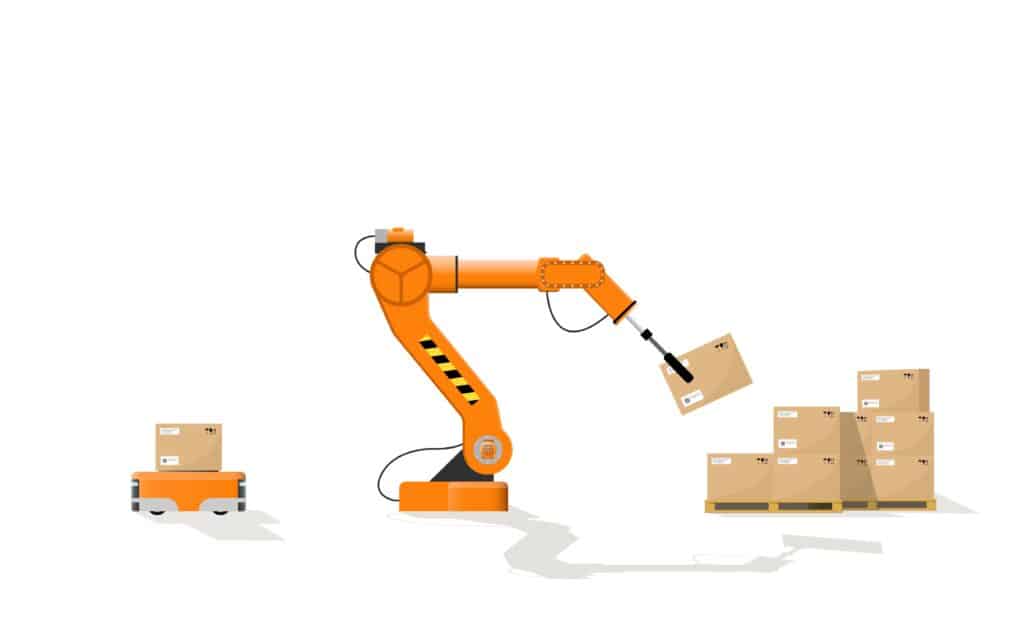Inventory management is undergoing a technological revolution. Cutting-edge innovations are transforming outdated inventory practices. These technologies enable unprecedented visibility, speed, accuracy, and optimization across complex global supply chains.
For businesses, this means slashing costs while improving customer service levels. Sounds revolutionary, indeed! This article explores the top eight technologies propelling inventory management into a new era of intelligence and efficiency.
From AI to automated workflows, you’ll uncover the innovations offering organizations a potent competitive edge through transformed inventory and manufacturing software capabilities. Read on for the tech boost your supply chain needs.

Contents
1. Leveraging AI And Machine Learning
Artificial intelligence (AI) and machine learning algorithms are being embedded into inventory software platforms. These self-learning capabilities automate processes, detect anomalies, forecast demand, and optimize stock levels.
For example, machine learning can comb through data to identify trends and make recommendations about optimum inventory quantities and placement within the supply chain. This reduces waste and improves service levels.
You’ll see that AI and machine learning allow inventory management systems to become increasingly intelligent and accurate over time. This reduces the need for human intervention in routine decisions.
2. Enhancing Visibility Through Digital Twins
A digital twin is a virtual representation of a physical asset or process. Digital twins use real-time and historical data from sensors, cameras, and more to understand, predict, and optimize performance.
For inventory management, digital twins provide end-to-end supply chain visibility by mapping the physical movement of products. This improves tracking and enables rapid responses to supply chain disruptions.
Furthermore, the insights from digital twins can be operationalized to align inventory planning with real-world constraints. This leads to improved demand forecasting, stock optimization, and warehouse utilization over time.
3. Automating Processes With Robotic Process Automation
Robotic process automation (RPA) uses software ‘robots’ to automate repetitive, manual inventory processes. This includes the execution of workflows around order processing, reporting, auditing, etc. This also improves accuracy by eliminating human error.
Importantly, automated inventory processes enabled by RPA increase an organization’s agility. New workflows can be designed and deployed quickly to support changing business requirements.
The use of RPA is exploding as organizations seek greater supply chain efficiency. Expect RPA capabilities to become an integral capability within inventory management solutions
4. Deriving Insights From Big Data
Big data refers to the vast volumes of structured and unstructured data being generated across supply chains. Inventory management systems are now leveraging big data analytics to uncover trends, derive predictions, model scenarios, and prescribe inventory policies.
You can expect embedded analytics capabilities to become pervasive in inventory software. Big data gives organizations the input needed to make smarter, data-driven decisions on inventory planning and optimization. This will require the right skills to translate analytics-based insights into tangible actions.
5. Integrating Horizontal Value Chains
Historically, inventory data and processes have been siloed across internal functions and external partners. Modern platforms break down these siloes by seamlessly integrating horizontal value chains. This provides end-to-end visibility as products move from suppliers through production and to customers.
With integrated data flows, disruptions can be rapidly identified so proactive decisions can be made before impact. You’ll see inventory platforms embrace open architectures that enable secure data sharing and process coordination across expansive partner ecosystems.
6. Increasing Supply Chain Transparency
Consumers and regulators alike are demanding greater transparency from brands about their sustainable and ethical sourcing practices. Inventory platforms are responding by adding traceability functionality—tracking the provenance of raw materials back to their origin.
Advanced tracking methods, including IoT sensors, blockchain, machine vision, and more, create digital breadcrumbs along the supply chain. This provides proof points on sustainability, ethics, and provenance while improving supply chain visibility.
7. Adopting Cloud Computing Systems
Inventory management systems were traditionally delivered on-premise using proprietary hardware and databases. Modern solutions are now cloud-native SaaS platforms. This reduces upfront costs while enabling scalability, resiliency, and update speed.
With a cloud inventory platform, organizations can efficiently support business growth and quickly roll out new capabilities. The cloud also enhances cross-functional planning through integrated data flows to other SaaS solutions for finance, manufacturing, sales, and more.
8. Leveraging 5G And IoT For Tracking
5G networks provide the foundational infrastructure for scaling IoT deployments. With 5G, there are more device connection points, faster data speeds, and lower latency. Inventory management leverages these capabilities by connecting products, equipment, warehouses, and trucks with sensors and tags. This generates enormous data flows for real-time monitoring and control.
IoT data enhances visibility while enabling automation through smart infrastructure like robots, automated storage and retrieval systems (ASRS), and autonomous vehicles. As 5G and IoT adoption accelerates, expect massive gains in inventory efficiency and accuracy.
Final Thoughts
Advanced technologies are elevating inventory management to a new level of intelligence, speed, accuracy, and efficiency. Organizations that fail to embrace these technologies will grapple with bloated inventories, stock-outs, waste, and supply chain risks.
However, those investing in technology-driven inventory capabilities will gain a competitive advantage through optimized working capital, lower costs, and the agility to excel in turbulent times.

